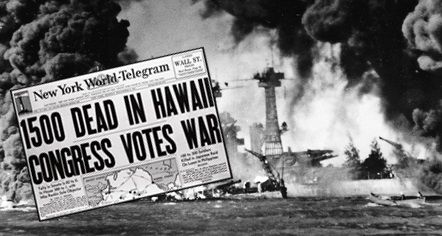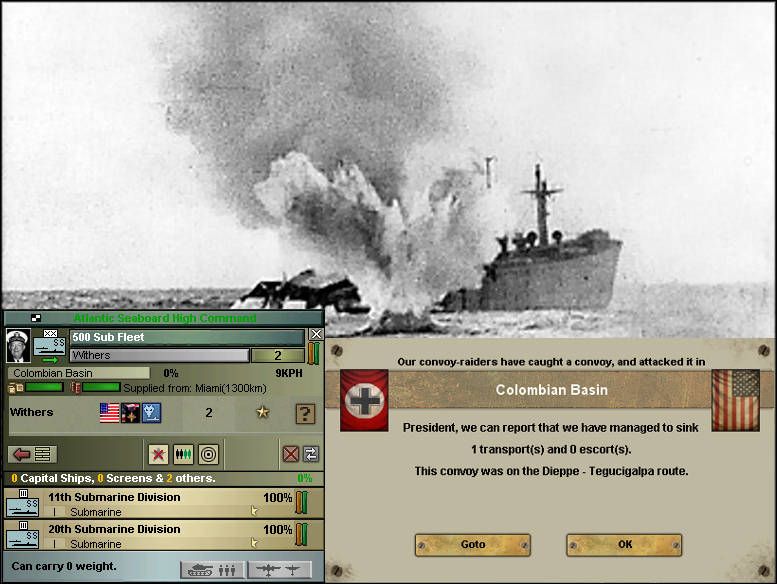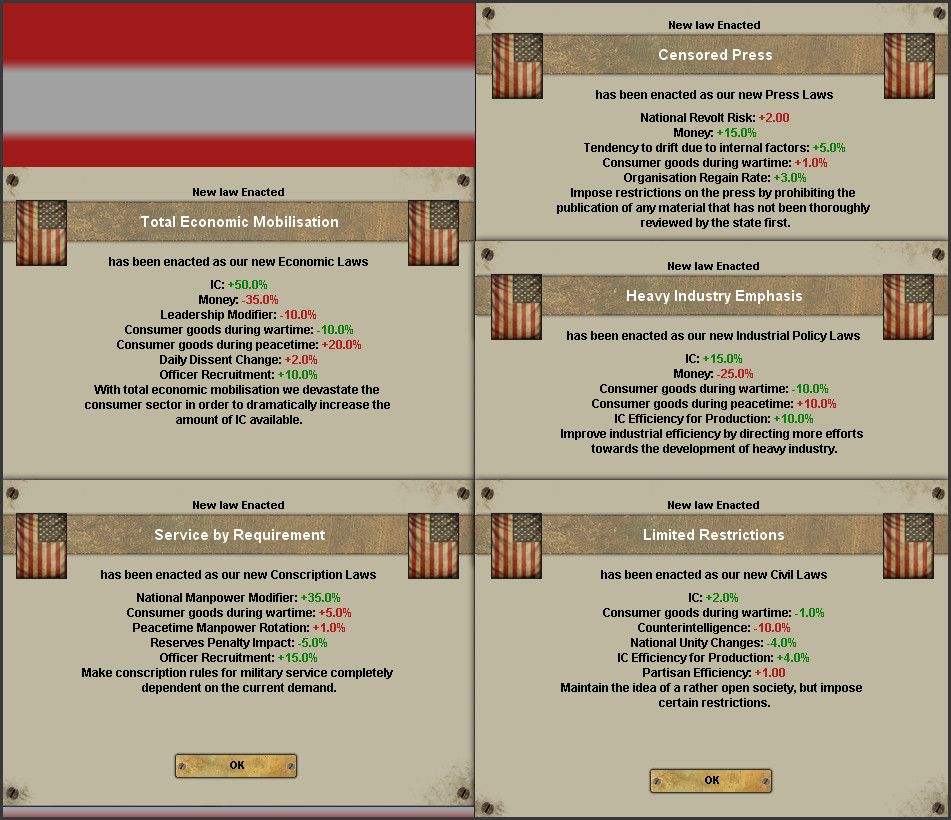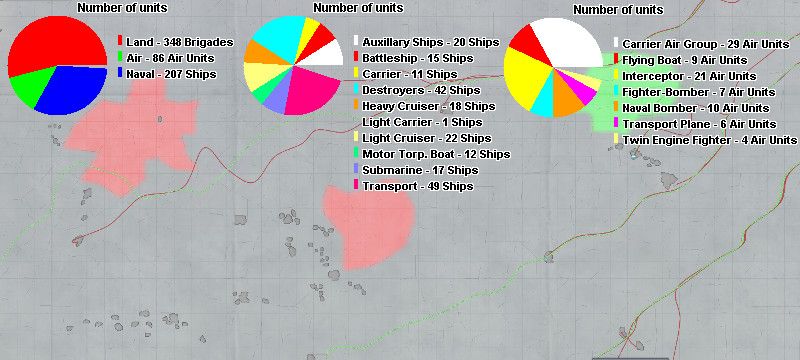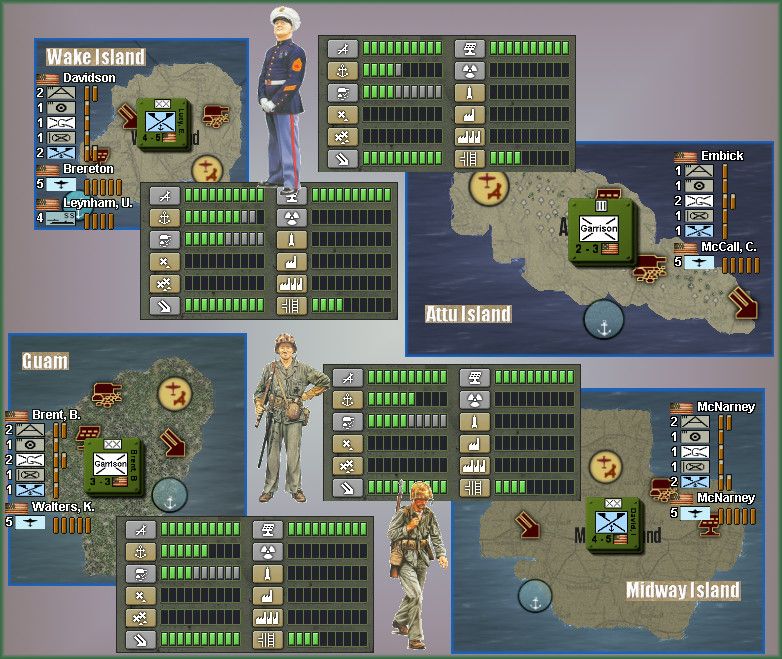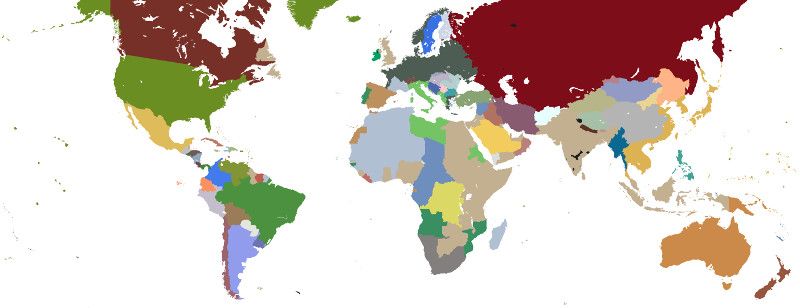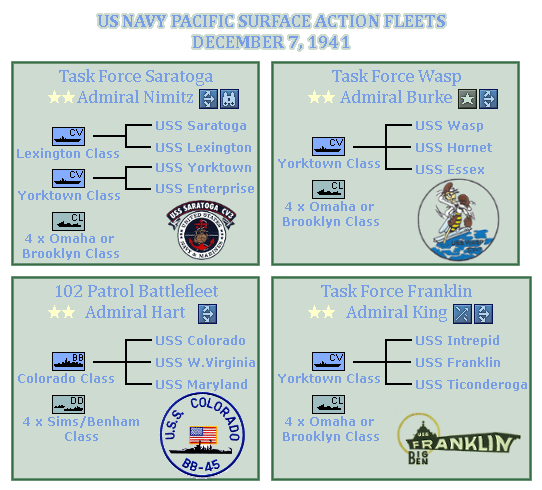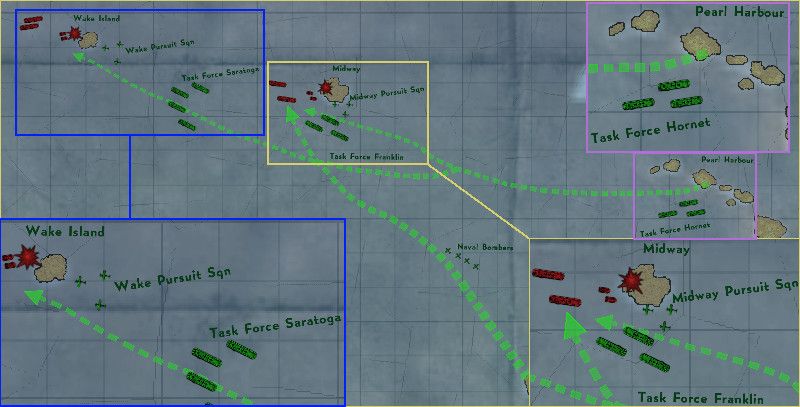GEARING UP FOR WAR
PART 3
MARCH 6, 1936 - DECEMBER 7, 1941
During the late 30's and first years of the '40's the military commanders in the US continued to subtly prepare for war. This was initially accomplished by ramping up industrial capacity in the midwest. Many of these factories were used to produce various consumer goods, but the excess were put to use for military means. Meanwhile, Hitler began to add countries to the German Empire. Many Americans were uninterested or unaware of the German build up. Even the US Intelligence was ignorant of Hitler's plans, or even the make up of German forces. Were there the political will to do so, America could not even prove that Germany had indeed broken the Treaty of Versailles. More worrying than far away Europe, the Japanese threat to the Pacific began to take form in early 1938. The Empire of Japan, starved of resources, set it's sights on mainland China. Word reached the US of atrocities carried out; however, these were events happening to a backwards people half a world away. Efforts to convince the populace of anything more fell on mostly deaf ears.
By late 1938 Germany had annexed Czechoslovakia and Japan's forces were pushing farther into mainland China. Roosevelt heard almost daily the threat that these two nations posed to world peace and so he began preparing for war against them. He approved the preparation of the Rainbow Plans for North American defense, assuming that America would stand alone against Germany and her Axis. The American public was greatly displeased with this decision and several incidents of civil unrest are said to be directly related to it. It was a long term strategy though. Since FDR had time to rebuild his popularity with the populace, he used this as the first, timid shove to the public to get them thinking about the affairs happening outside of the US.
Throughout the rest of 1938 and most of 1939 things quieted down. Japan continued its march into China and nothing much was head from Germany, besides a non-aggression pact signed with the Soviets. In a move that left millions of mouths agape across the US, Germany declared war on Poland on September 2, 1939, the USSR followed on October 3, prompting FDR to declare a state of emergency in the US. Two days later Germany sank the SS Athenia. Several of his generals urged the President to join the war against Germany. "An attack on a US ship must be answered!" they said (although no-one proposed war after the USS Panay). FDR had just approved further plans for the defense of the US and could not stomach the blow to public opinion. Only months until an election, it was a certainty that he would not be re-elected should he bring the US into the war. No, while it pained him to do so, FDR remained neutral. He began sending aid to Britain and France though. American ships began sailing across the Atlantic with supplies and arms for the two Allies.
Additionally, FDR used this moment of national outrage to ramp up production. That day laws passed in congress instituting a War Economy and a Three Year Draft. As the factories were converted, the power of the early investment in industrial capacity became apparent. Admiral Clause A. Swanson (who replaced Admiral Standley as Chief of the Navy after Standley was embroiled in scandal and forced to retire in mid 1938) immediately began lobbying for more carriers in the Navy. FDR obliged by laying down 14 new Yorktown class aircraft carriers (although 8 were marked as "low priority") as well as continuing construction on USS Lexington and USS Saratoga, which had sat idle since 1936 . When placing the order, General Westover suggested ordering additional carrier air groups. One extra group per carrier was initially planned, to replace planes that were sure to be lost. However, since the US had not been producing droves of airplanes to this point, the cost would have been staggering. A compromise was reached where 36 CAG's were ordered. Since they would be ready prior to most of the carriers, any losses could be replaced before those wings were required for ships. CAG's without a ship would be stationed in the Pacific and operated from land based airstrips, ready to replace losses on carriers or fight as land based aircraft.
In December the USSR declared war on Finland. It's said that some reporters had to fight with editors to even get this story in the news. Soon thereafter Italy and Hungary entered an alliance with Germany. Again, this news was barely reported in the US.
In January 1940 Germany conquered Poland and Japan conquered China (both the Republic of and the Communist arm). Many meetings were had between senior staff, but aside from US citizens of Polish decent or Polish immigrants, the news went mostly unnoticed. Having realized success in Poland, Germany went on to conquer Denmark in March and Norway in April. Both countries were conquered in 4 weeks. Then, in May, Germany made its true intentions known by declaring war on the Netherlands, Luxemburg and Belgium. The western front would be blown open and German troops would flood northern France within weeks. Further, Japan began mobilizing her military. It's said that FDR was furious with MacArthur. How were they to stand up to an enemy that had conquered the most populous country on the planet with reserve divisions?!
While war raged in Europe the US launched 4 carriers in late 1940. These carrier were grouped together along with 5 light cruisers to form Operation Group Lincoln (later renamed Task Force Saratoga) under Admiral Nimitz. This concentration of force represented the very best, most state of the art technology in the US at the time.
FDR won a landslide election in the fall of 1940, despite what some called his "war mongering and wasteful" ways.
France fell in January 1941. FDR assauged his guilt by telling himself that the supplies and arms the US had sent to the French had helped, and had they put down their pastries and moved out of their fortresses, perhaps they would have fared better against such a mobile force. The potency of German armor had not gone unnoticed in the US and in late 1940 2 armored divisions were raised, using secret technology. These two divisions would work out the kinks of the advanced medium armor technology in order to improve the mass produced tanks, before production began. When France fell, Japan seized its holdings in Indochina, prompting FDR to enact the Lend-Lease Act, officially bringing into law the aid he had already been providing to the Allies overseas. In order to protect American interests and shipping he also instituted the Pan American security zone.
Several weeks later, on February 8, 1941, the US fired her first shots in anger. Admiral Withers, commander of 500 Sub Fleet found and sunk a German merchant ship in the Columbian Basin. The S boat type submarine was a very outdated design (commissioned between 1920 and 1925); however, Withers was a willy old sea wolf. He surfaced near the long ship and sunk it with several shots from his 4" deck gun before slipping back beneath the sea.
American submarines continued to harass German shipping operating in the Caribbean and along the north and central American coasts. While some argued that the Pan American security zone was meant to act as an area that German submarines were not operate, not as a turkey shooting zone for American subs, the American leadership continued to raid, knowing that the liberation of France would be required one day. The fewer materials the Germans got until then, the better. Additionally, throughout early 1941 America continued to enact more war-like laws and provisions. The Coast Guard Auxiliary was established and the Neutrality Act repealed in the spring.
For their part, the Axis were not idle during this time. Italy declared war on Greece and Germany conquered Yugoslavia; the Axis gaze was firmly planted on the Balkans. British North Africa would likely be next. The planners were forced to eat their words when, on June 23, 1941, Hitler declared war on the Soviet Union. Based on past performance, most experts believed it would be a short war and that Germany would conquer the Soviets as they had done to everyone else. Without an eastern front to worry about, the general consensus was that Hitler would soon turn his eyes towards Britain.
By early October, Roosevelt had finally managed to have the New Deal repealed, one of the last road blocks in America's war economy. The New Deal had, for years, pushed much of the country's educated people into the private sector. With the New Deal out of the way, the government had was a much better option for these young men to come and complete research, lead troops, or embark overseas for intelligence missions. Further, it allowed the government to fund research through many universities, providing a significant boost to research efficiency.
Congress immediately passed war time laws.
Following the session in congress, the President asked for an update on current forces.
While not impressive, there were significantly more ships and airplanes than 1936, which was good for the US. Unfortunately, no breakdown of land brigades is available. It's said that MacArthur had them burned in a fit of rage.
The US convoys routes to Australia, New Zealand and Guam all went through Japanese held territory. FDR ordered more convoy ships, anticipating losses from submarines and land based aircraft. The might of the US economy began turning.
The key holdings of Guam, Wake, Midway and Attu were understaffed. MacArthur explained that his hands were tied. Between the economic commitments to the public and the naval and air force build up ordered by the Chief of Staff, he as Chief of Army was unable to recruit more Marine Defense Divisions than one per island. Some were about to finish training at Parris Island but would then need to be loaded onto transports and shipped to their destination. He assured the President that the divisions could hold in their defensive positions until the navy arrived to oust the invaders.
MacArthur insisted that the Marine Divisions represented the absolute state of the art in land technology in both the US and the world.
The two men allegedly then lit a cigar each and stared at the current map of the world, neither with anything to say...
tl;dr IIIIIIIIIIIIIT'S TIME!
Oh man that took a long time to write (sorry for the wall of text). I guess lots happens in 5 years (although it doesn't seem like it playing the US sometimes.) So here we go - I'm not sure how frequently in game time I'll update, but like I said, I'll shoot for once every 1-2 weeks. We'll see how these units hold up - hopefully my extra CAGs are worth it. If not, we'll have to get a bunch of Marine invasion units going... (they may or may not already be in the queue)
Because I basically had to tech rush to get decent planes, I still don't even have motorised inf tech, or medium arm. So I'm going to crank out some Interceptors and maybe Two Engine Fighters for the Battle of Britain.
No production queue although I suppose I could include it, if there's interest. I think I may write the next few from the POV of a staffer with MacArthur, but we'll see what sort of inspiration I have. Perhaps I'll include some production and the current units that we can produce - I like the pictures of the units...
As always, feedback, comments, critiques and donuts are welcome.

Also, I appreciate the work you're putting into your various graphics.



